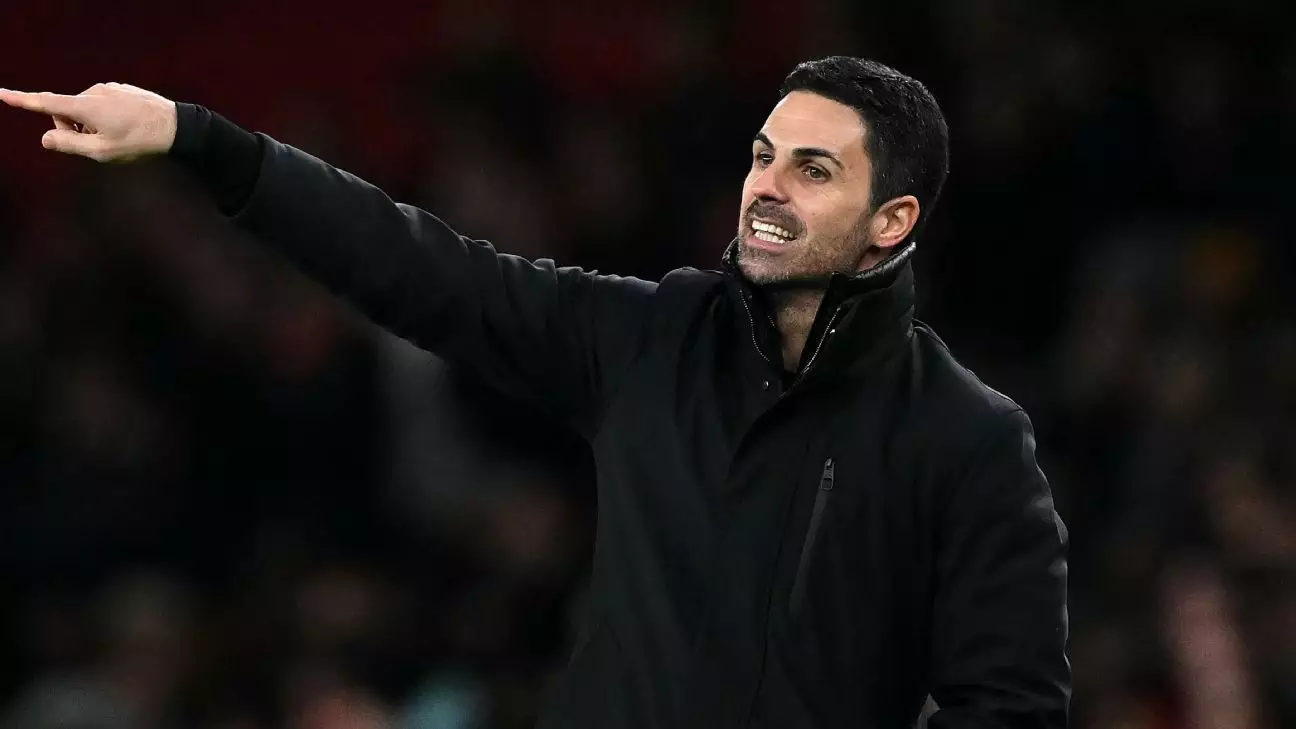Mikel Arteta and his Arsenal squad faced a harsh reality during their recent Carabao Cup semifinal against Newcastle United, suffering a 2-0 defeat. As this match unfolded, it became clear that more than just skill and strategy were at play; the inherent challenges of adjusting to differing equipment, particularly the match ball, significantly influenced the Gunners’ performance. Goals from Alexander Isak and Anthony Gordon put Newcastle in a strong position ahead of the return fixture, while Arsenal struggled to convert their opportunities, reflecting a concerning trend that could shape their future matches.
The Importance of Adaptation
The most striking statistic from the match was Arsenal’s expected goals (xG) figure of 3.12, indicating a profound inconsistency between their anticipated performance and their actual output. This number marks a troubling peak in the Premier League this season—no other team has accumulated a higher xG without registering a goal. Arteta’s acknowledgment of the team’s need to adapt to the Carabao Cup’s distinctive ball introduced by Puma highlights a fundamental principle in sports: the importance of adaptability. The sudden shift from the familiar Nike match ball to a new design has posed unique challenges for players as they navigate its unpredictable flight and differing grip.
Arteta’s comments about the match ball’s performance resonate with players and coaches alike, underscoring how critical equipment management can be in professional football. The coach noted that many shots were struck over the bar, suggesting a mismatch between players’ expectations and the ball’s behavior. By characterizing the ball as “tricky” and “different,” Arteta draws attention to an often-overlooked facet of professional play: that even minor variations in equipment can have significant impacts. The necessity for players to recalibrate their techniques and instincts to match the ball’s properties reflects a deeper understanding of the intricate dynamics of the sport.
Arteta’s background as part of Manchester City’s coaching staff offers an intriguing context to these concerns about match balls. Back in 2017, Pep Guardiola voiced similar frustrations regarding the Mitre ball, labeling it nearly impossible to score with, a deep-rooted worry among coaches regarding how the equipment can dictate the game’s flow. Yet, the English Football League (EFL) insists that all their balls meet stringent FIFA quality standards, indicating that the problem may lie more in the players’ acclimatization rather than the materials themselves.
As Arsenal prepares for the February 5 return leg, the challenge before them is adapting not just to a new ball but reclaiming their mental edge. Arteta’s advice to focus on learning from this experience rather than dwelling on missed opportunities reflects a crucial mindset in competitive sport. For Arsenal, this upcoming match is not only a chance for redemption but also a testament to their resilience in adapting to the layered complexities of football, where both physical and psychological elements converge. Ultimately, overcoming the hurdles of adaptation will be vital for the Gunners as they strive to turn the tide in their favor.

